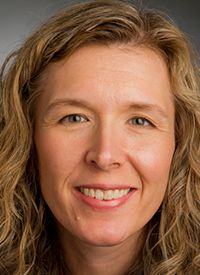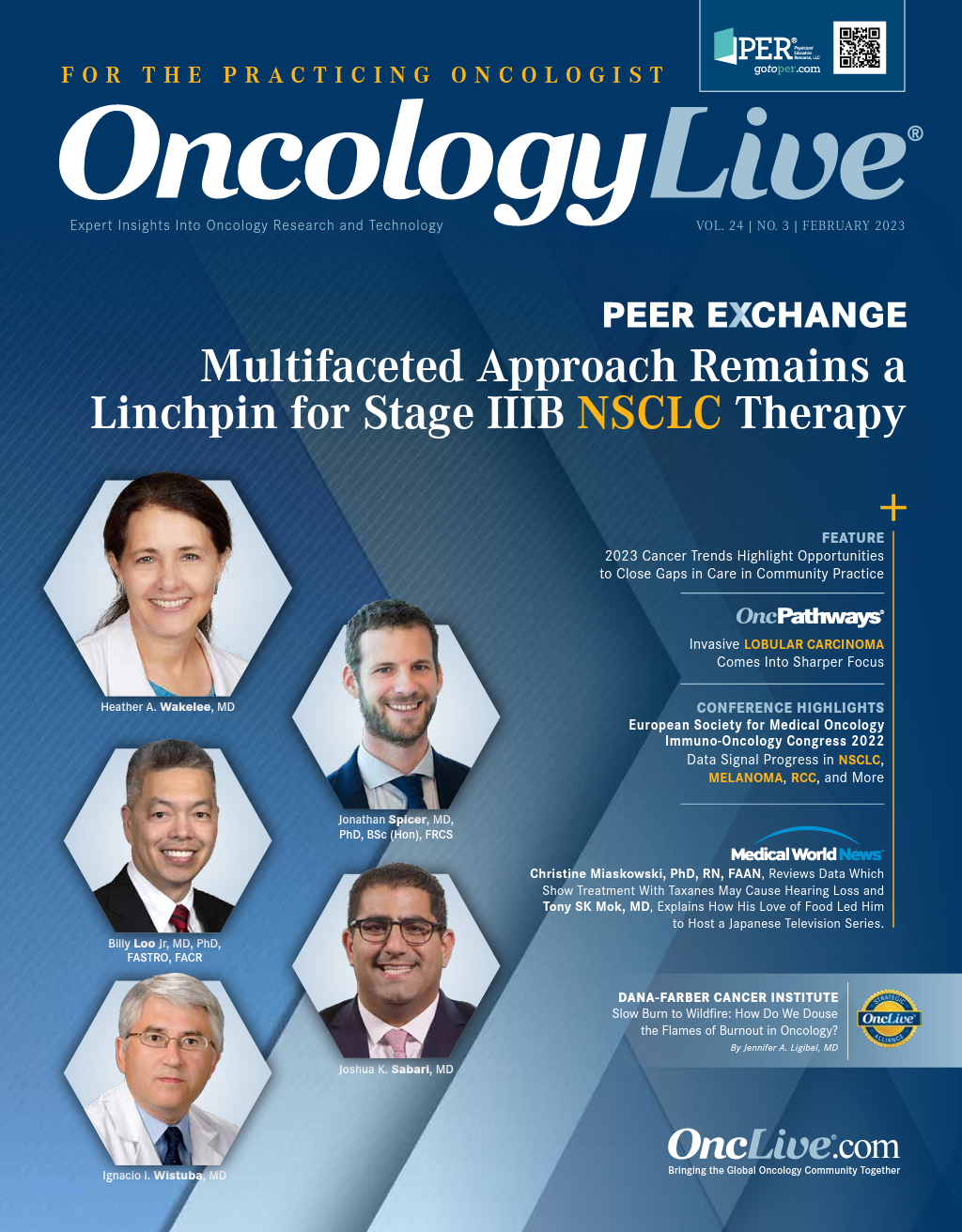Slow Burn to Wildfire: How Do We Douse the Flames of Burnout in Oncology?
Trauma and stress related to the COVID-19 pandemic, coupled with subsequent widespread labor shortages, have turned burnout, which was an endemic issue in medicine, to a pandemic in health care.
Jennifer A. Ligibel, MD

Burnout in medicine is not new—the syndrome was described in 1974 by psychologist Herbert J. Freudenberger as a condition that occurs when occupation-related stress combined with additional life pressures exceed an individual’s ability to cope and thrive, resulting in physical and mental distress.1,2 Trauma and stress related to the COVID-19 pandemic, coupled with subsequent widespread labor shortages, have turned what was an endemic issue in medicine to a pandemic of burnout in health care.
Longitudinal work evaluating the prevalence of burnout among physicians in the United States between 2011 and 2021 demonstrated that 62.8% of physicians surveyed in 2021 reported at least 1 burnout-related symptom compared with 38.2% (P < .001) in 2020 and 45.5% (P < .001) in 2011.3 Given that burnout has been linked to higher rates of depression, substance use disorders, suicide, medical errors, and reduction in work hours, these findings have profound consequences not only for physicians and other members of the health care team, but for the practice of medicine more broadly.4-8
Burnout in Oncology
Recent reports have focused on the pandemic’s impact on physician burnout in fields including emergency medicine, critical care, and hospital medicine.3,9 Oncologists and other members of the oncology care team face challenges inherent to their work that place them at high risk of burnout, such as caring for a high proportion of terminally ill patients, counseling families, and prescribing and managing potentially toxic therapies.1,2,8,10
Shanafelt et al conducted a survey assessing burnout and related predictors in a cohort of 1998 US-based oncologists identified through membership files of the American Society of Clinical Oncology (ASCO) in 2013.8 Burnout was assessed through the Maslach Burnout Inventory, a standardized measure that assesses the 3 primary domains of burnout (emotional exhaustion, depersonalization, and a feeling of low personal accomplishment).
Among a final sample size of 1490 respondents, 44.7% reported at least 1 symptom of burnout. Moreover, 38.3% reported emotional exhaustion, 24.9% depersonalization, and 13.2% a sense of low personal achievement. A multivariate analysis revealed that younger age (P < .001), higher number of hours providing direct patient care (P < .001), higher number of hours performing work-related tasks at home (P = .039) and focus on an individual type of cancer (P = .027) were factors significantly associated with higher risk of burnout.
The survey also identified significant differences in the factors associated with burnout in the private practice vs academic settings. In private practice, having children was associated with lower risk of burnout (P = .036), whereas spending more time engaged in administrative work was associated with higher risk of burnout (P = .003). In academic practice, being female (P = .042), having shorter appointment lengths for return patients (P = .049), and having more weekends on call (P = .002) were associated with higher risk of burnout.
Studies have also evaluated the prevalence and drivers of burnout in nonphysician members of the oncology care team. A 2019 survey assessed burnout and its relationship to workplace factors in members of the Association of Physician Assistants in Oncology.11
Of 342 survey respondents 48.7% met the definition of burnout, with 43.6% having a high score on the emotional exhaustion scale and 22.2% on the depersonalization scale. Although patient volume was not associated with burnout, physician assistants who perceived a higher workload were at increased risk of burnout (P = .001). Physician assistants who spent more time practicing in a manner consistent with their education and experience were at lower risk of burnout; those who spent at least 75% of their time working at top of license had a burnout rate of 43.4% compared with 56.7% for those who spent less than 75% of their time working at this level. Finally, mismatch between individual and workplace values (P = .003) and rewards (P = .008) were also associated with increased risk of burnout.11
A similar survey collected information about burnout among oncology pharmacists (n = 614) in 2020.10 Most respondents (61.8%) met the definition of burnout, with 57.9% having high scores on the emotional exhaustion scale and 31.3% scoring high on the depersonalization scale. Pharmacists who met the definition of burnout worked more hours (48.6 ± 9.6 h/wk vs 44.5 ± 9.6 h/wk; P < .001) and spent more time on administrative (7.5 hours/week vs 4.3 h/wk; P < .001) compared with those who did not meet the definition.10
These surveys suggest that burnout is prevalent across the oncology care team, with high rates of emotional exhaustion. Long work hours were related to higher rates of burnout across professions. However, other predictors of burnout differed depending on job role and practice setting, suggesting that strategies to mitigate burnout must be individualized to be impactful.
Mitigating Burnout and Supporting Professional Well-Being
To address the growing threat that burnout poses to the health care workforce, many organizations, including the American Medical Association (AMA) and the National Academy of Medicine, have supported work to explore the drivers of burnout and develop initiatives to mitigate it and reinforce professional well-being in health care workers.
The AMA commissioned a landmark report in 2013 that highlighted the importance of delivering high-quality care to increase professional satisfaction, pros and cons of electronic health records, value of income stability and fairness, and cumulative burden of regulations.12 This work has led to the development of online resources, such as the STEPS Forward toolkits, aimed at mitigating burnout and supporting clinician well-being.
In 2019, the National Academy of Medicine published a consensus report titled, “Taking Action Against Clinician Burnout: A Systems Approach to Professional Well-Being.” The report categorized the causes of burnout and recommended a multi-pronged action plan that included the creation of positive work and learning environments, reduction of administrative burden, optimization of information technologies, provision of support for clinicians and trainees, and investment in research on clinician well-being.13
The ASCO has focused on developing initiatives to address burnout in the oncology work force. In 2020, ASCO created a Clinician WellBeing Task Force as a collaborative effort between ASCO committees, with the goal of coordinating efforts to address burnout in oncology clinicians.2 The group has a transdisciplinary membership, including ASCO volunteers with expertise in oncology, psychology/psychiatry, nursing/advanced practice, burnout/well-being, professional/organizational development, ethics, and cancer administration.
The ASCO task force subsequently developed a roadmap outlining the mission and the 5-year goals of the ASCO Well-Being initiative. Key objectives of the task force include incorporating clinician well-being across ASCO activities, broadening resources to support well-being, and promoting research to identify clinician practice needs. It is also committed to collecting longitudinal data regarding the prevalence and predictors of burnout in oncology clinicians. The initiative planned to conduct an additional survey assessing the prevalence and predictors of burnout in ASCO physician members in January of 2023 to help guide further recommendations and initiatives (Figure14).
Figure. 5-Year Goals of the ASCO Oncology Clinician Well-Being Task Force14

Burnout is a growing problem in oncology and in medicine more broadly. Longer work hours drive high rates of burnout across professional roles, but other drivers of burnout are more specific to job roles and work environment. Developing meaningful initiatives to mitigate the factors contributing to burnout will require societal level change and commitments at the level of individual institutions. Coordinated efforts by organizations like the AMA, National Academy of Medicine, and ASCO will play a critical role in driving the changes needed to support both clinicians and high-quality care for patients.
Jennifer A. Ligibel, MD, is director of the Leonard P. Zakim Center for Integrative Therapies and Healthy Living, director of the Center for Faculty Well-Being, and a senior physician at Dana-Farber Cancer Institute, and an associate professor of medicine at Harvard Medical School in Boston, Massachusetts.
References
- Copur MS. Burnout in oncology. Oncology (Williston Park). 2019;33(11):687522.
- Hlubocky FJ, Shanafelt TD, Back AL, et al. Creating a blueprint of well-being in oncology: an approach for addressing burnout from ASCO’s Clinician Well-Being Taskforce. Am Soc Clin Oncol Educ Book. 2021;41:e339-e353. doi:10.1200/EDBK_320873
- Shanafelt TD, West CP, Dyrbye LN, et al. Changes in burnout and satisfaction with work-life integration in physicians during the first 2 years of the COVID-19 pandemic. Mayo Clin Proc. 2022;97(12):2248-2258. doi:10.1016/j.mayocp.2022.09.002
- Shanafelt TD, Sloan JA, Habermann TM. The well-being of physicians. Am J Med. 2003;114(6):513-519. doi:10.1016/s00029343(03)00117-7
- Shanafelt TD, Balch CM, Dyrbye L, et al. Special report: suicidal ideation among American surgeons. Arch Surg. 2011;146(1):54-62. doi:10.1001/archsurg.2010.292
- Oreskovich MR, Kaups KL, Balch CM, et al. Prevalence of alcohol use disorders among American surgeons. Arch Surg. 2012;147(2):168-174. doi:10.1001/archsurg.2011.1481
- Shanafelt TD, Balch CM, Bechamps G, et al. Burnout and medical errors among American surgeons. Ann Surg. 2010;251(6):995-1000. doi:10.1097/SLA.0b013e3181bfdab3
- Shanafelt TD, Gradishar WJ, Kosty M, et al. Burnout and career satisfaction among US oncologists. J Clin Oncol. 2014;32(7):678-686. doi:10.1200/JCO.2013.51.8480
- Mazur LM, Adapa K, Meltzer-Brody S, Karwowski W. Towards better understanding of workplace factors contributing to hospitalist burden and burnout prior to COVID-19 pandemic. Appl Ergon. 2023;106:103884. doi:10.1016/j.apergo.2022.103884
- Golbach AP, Mccullough KB, Soefje SA, Mara KC, Shanafelt TD, Merten JA. Evaluation of burnout in a national sample of hematology-oncology pharmacists. JCO Oncol Pract. 2022;18(8):e1278-e1288. doi:10.1200/OP.21.00471
- Tetzlaff ED, Hylton HM, Ruth KJ, Hasse Z, Hall MJ. Association of organizational context, collaborative practice models, and burnout among physician assistants in oncology. JCO Oncol Pract. 2022;18(8):e1306-e1319. doi:10.1200/OP.21.00627
- Friedberg MW, Chen PG, Van Busum KR, et al. Factors affecting physician professional satisfaction and their implications for patient care, health systems, and health policy. Rand Health Q. 2014;3(4):1.
- National Academies of Sciences, Engineering, and Medicine; National Academy of Medicine; Committee on Systems Approaches to Improve Patient Care by Supporting Clinician Well-Being. Taking Action Against Clinician Burnout: A Systems Approach to Professional Well-Being. Washington (DC): National Academies Press (US); October 23, 2019.
- ASCO Oncology Clinician Well-Being Task Force roadmap. American Society of Clinical Oncology. Accessed January 5, 2023. bit.ly/3X4kZ6l




